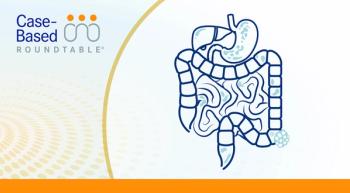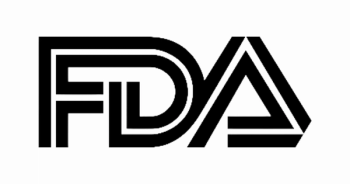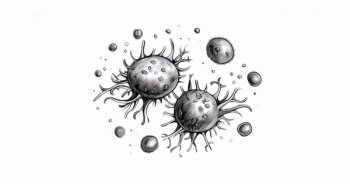
Cabozantinib Combo Sustains PFS Benefit in Advanced Kidney Cancer
Cabozantinib plus nivolumab and ipilimumab maintained a progression-free survival benefit at 45 months vs placebo in advanced kidney cancer.
Final results from the phase 3 COSMIC-313 trial (NCT03937219), presented at the 2025 ASCO Genitourinary Cancer Symposium, showed that first-line cabozantinib (Cabometyx) combined with nivolumab (Opdivo) and ipilimumab (Yervoy) sustained a progression-free survival (PFS) benefit at 45 months of follow-up compared with placebo plus nivolumab and ipilimumab in patients with advanced renal cell carcinoma (RCC).
The updated PFS in the intent-to-treat population was 16.6 months (95% CI, 14.0-22.6) in the combination arm and 11.2 months (95% CI, 9.3-14.0) in the placebo arm (HR, 0.82; 95% CI, 0.69-0.98). The overall survival (OS) was 41.9 months (95% CI, 34.8-47.9) in the cabozantinib arm and 42.0 months (95% CI, 34.9-53.1) in the placebo arm (HR, 1.02; 95% CI, 0.85-1.23; P = .8366).
Based on the International Metastatic Renal Cell Carcinoma Database Consortium (IMDC), the PFS for those in the intermediate risk group was 22.1 months (95% CI, 14.1-25.3) in the cabozantinib arm and 11.3 months (95% CI, 8.3-16.7) in the placebo arm (HR, 0.76; 95% CI, 0.62-0.93); and for those in the poor risk group, results were 9.5 months (95% CI, 8.2-15.8) vs 11.2 (95% CI, 6.0-21.6), respectively (HR, 1.04; 95% CI, 0.73-1.48). The OS in the intermediate group was 47.9 months (95% CI, 42.6-51.6) in the cabozantinib arm vs 48.0 months (95% CI, 42.0-not estimable [NE]) in the placebo arm (HR, 0.99; 95% CI, 0.79-1.24); and for the poor risk group it was 19.4 months (95% CI, 15.8-29.3) vs 24.0 months (95% CI, 16.3-30.9) between both arms, respectively, (HR, 1.09; 95% CI, 0.78-1.51).
“There were no significant differences in OS between the 2 arms in the ITT population or by IMDC risk group,” Laurence Albiges, MD, PhD, head of the Department of Oncology at Gustave Roussy in France, said during the presentation.
Overall, 428 patients were enrolled in the cabozantinib arm and 427 were enrolled in the placebo arm. Cabozantinib was given at 40 mg by mouth daily plus 3 mg/kg of intravenous nivolumab every 3 weeks for 4 cycles and 1 mg/kg of ipilimumab intravenously every 3 weeks for 4 cycles. Patients could then transition to maintenance cabozantinib at 40 mg by mouth each day plus 480 mg of intravenous nivolumab every 4 weeks. In the placebo arm, patients were given matched treatment.
The primary end point was PFS per RECIST v1.1 per blinded independent review committee after the 249th event in the first 550 randomized patients. The secondary end point was OS after 433 events in all randomized patients.
In the cabozantinib arm, 373 patients discontinued all study treatment vs 361 in the placebo arm, and reasons included progressive disease (40% vs 44%, respectively), adverse effect (AE) unrelated to disease progression (29% vs 21%), and AE related to progression (5% vs 9%).
The baseline characteristics were well balanced between arms, but Albiges pointed out the IMDC risk group. In the cabozantinib arm, 75% of patients were stratified as intermediate vs 75% in the placebo arm, and 25% vs 25% were in the poor risk group.
Overall, most patients had 1 or more prior systemic anticancer therapy between the cabozantinib and placebo arms (50% vs 49%). The median time to first systemic non-protocol therapy was 14.5 months vs 9.7 months. The most common subsequent therapy types were VEGFR tyrosine kinase inhibitor (36% vs 41%), PD-1/PD-L1 inhibitor (11% vs 12%), mTOR inhibitor (13% vs 6%), and HIF2α inhibitor (0.2% vs 0.7%).
Treatment exposure and AEs did not differ much from previously reported analysis. However, Albiges noted the median average daily dose of cabozantinib was 22.4 mg vs 35.2 mg for placebo. The cycles of ipilimumab administration were 7 for the first line, 22 for the second line, 13 for the third line, and 58 for the fourth line in the combination arm vs 6 for the first line, 7 for the second line, 13 for the third line, and 74 for the fourth line in the placebo arm. Treatment-related AEs that led to discontinuation occurred in 49% vs 26%, respectively.
The most common treatment-related AEs of grade 3/4 were alanine aminotransferase increase (26% vs 6%), aspartate aminotransferase increase (19% vs 5%), diarrhea (5% vs 3%), and palmar-plantar erythrodysesthesia syndrome (4% vs 0%).
RNA sequencing from tumor samples occurred in 398 patients and were divided among molecular clusters or immune cell deconvolution. From there, they either went to characterization/validation or random forest model. There were 7 molecular subsets that were revealed during the unsupervised transcriptomic analysis. Overall, no clear molecular clusters were observed in relation to clinical outcomes, but the sample size for each was small.
Regarding deconvolution, when assessing different immune types, the M2-like macrophages were the best predictor of OS. These contribute to tumor growth, invasion, and metastases because they suppress the immune response, and are associated with poor prognosis throughout different cancers. If patients have IMDC poor risk or present with visceral metastasis, they exhibited higher levels of M2-like macrophages.
It was found that the cabozantinib combination overcame the M2-like macrophage-mediated tumor response. For M2-like low, the median PFS was 22.1 months (95% CI, 11.4-30.6) in the cabozantinib arm vs 16.7 months (95% CI, 12.0-25.0) in the placebo arm (HR, 0.89; 95% CI, 0.66-1.20; P = .44). M2-like high had a median PFS of 10.1 months (95% CI, 9.23-NE) in the combination arm vs 5.95 months (95% CI, 3.81-12.0) in the placebo arm (HR, 0.48; 95% CI, 0.29-0.81; P = .0058). Additionally, the median OS for M2-like low was 47.8 months (95% CI, 36.8-NE) in the cabozantinib arm vs NE (5% CI, NE-NE) in the placebo arm (HR, 1.2; 95% CI, 0.88-1.70; P = .23).For M2-like high, the median OS was 39.9 months (95% CI, 31.4-NE) in the cabozantinib arm vs 23.0 months (95% CI, 13.4-35.0) in the placebo arm (HR, 0.51; 95% CI, 0.31-0.86; P = .012).








































